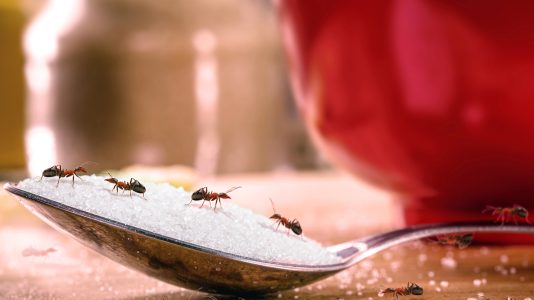Spring Inspection: Signs of an Infestation You Shouldn’t Ignore
May 3rd, 2025
Spring is a time when nature awakens, but it’s also when pests begin to make their presence known in our homes. A thorough inspection of your home is essential to prevent and address any insect or rodent infestations before they become a major issue. In this article, we’ll guide you through the signs to look for and the steps to follow for a successful spring inspection.
Why Conduct an Inspection in Spring?
Spring is a critical period, as warmer temperatures and increased humidity create an ideal environment for insects and rodents to reproduce and move around. During this season, pests often seek shelter in homes to find food, water, and a comfortable space to reproduce. Ignoring the early signs of an infestation can lead to significant damage and inconvenience. That’s why regular home inspections are crucial.
Signs of an Insect or Rodent Infestation
- Presence of Debris and Visible Traces
One of the first signs of an infestation is finding debris left by insects or rodents. For example, ants leave trails of pheromones and small food scraps. Rats and mice, on the other hand, leave droppings and scratch marks on floors or walls. If you notice small piles of debris or suspicious marks, it could be a sign of an invasion.
- Unusual Noises
Scratching or movement sounds coming from the walls, ceilings, or attic could be a sign of rodents. Mice and rats are particularly active at night and may travel through walls to find their way. If you hear these noises, it’s important to conduct a more thorough inspection.
- Property Damage
Rodents, in particular, tend to chew on anything they find, including electrical cables, insulation, and wood structures. If you notice damaged wires, holes in your walls, or rodent tracks on your furniture, it’s time to take action. These damages can pose a safety hazard to your home in addition to promoting the spread of the infestation.
- Visible Pests
Insects such as flies, mosquitoes, or even cockroaches can be seen in various areas of your home. If you see them in large numbers, it’s a clear sign that an infestation is underway. Likewise, if you spot rodents like mice or rats, it’s crucial to act quickly to prevent them from causing damage.
- Unpleasant Odors
Rodent or insect infestations are sometimes accompanied by foul odors. Droppings, urine, or the smell of dead pests can create an unpleasant atmosphere. If you detect unusual odors in closed or poorly ventilated areas like attics, basements, or walls, it could be a sign of an infestation.
How to Conduct an Effective Inspection?
- Check for Entry Points
Windows, doors, and foundations are often entry points for insects and rodents. Ensure all cracks and openings are properly sealed. If you find holes or gaps where pests could enter, repair them immediately.
- Inspect Damp Areas
Insects like ants and termites are attracted to moisture. Check your ba33sements, bathrooms, kitchens, and any areas where moisture might be present. Water leaks or damp spots can create a favorable environment for infestations.
- Use Detection Traps
Rodent traps and insect traps can be helpful for detecting pests in your home. Place them in strategic locations such as under sinks, behind furniture, or near doors.
What to Do in Case of an Infestation?
If, after your inspection, you find clear signs of an infestation, it’s recommended to contact professionals like BW Nature. Our pest management experts offer eco-friendly and effective solutions to eliminate infestations and protect your home in the long run.
Conclusion
Spring inspections are a key step in preventing insect and rodent infestations. By spotting the early signs, you can avoid health problems, property damage, and additional costs. If you have any doubts or notice signs of pests, contact BW Nature for a quick evaluation and effective treatment.




